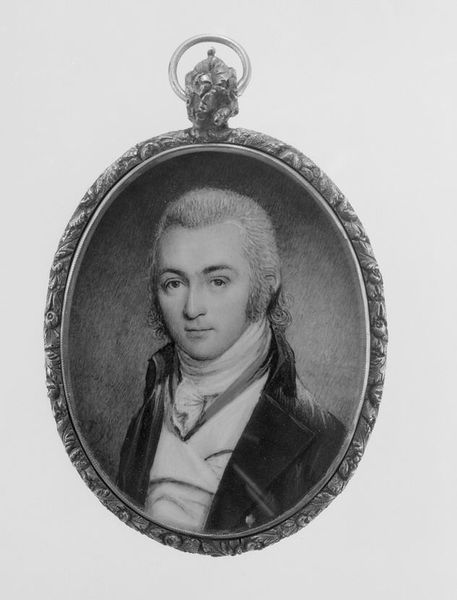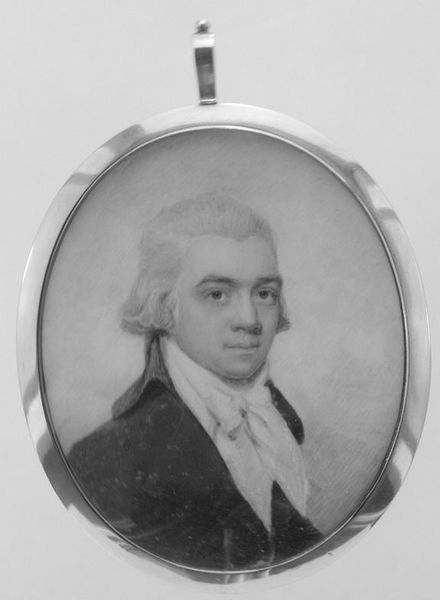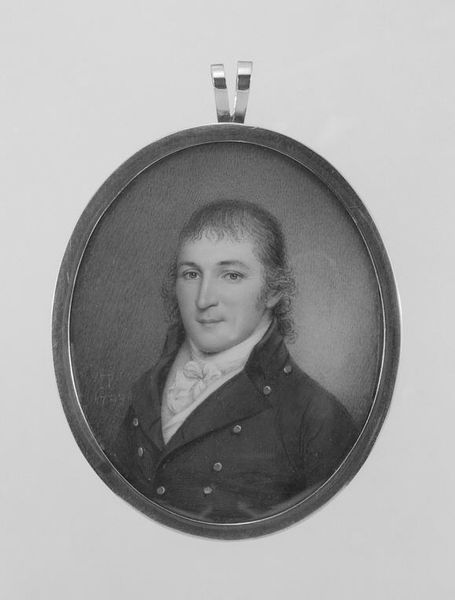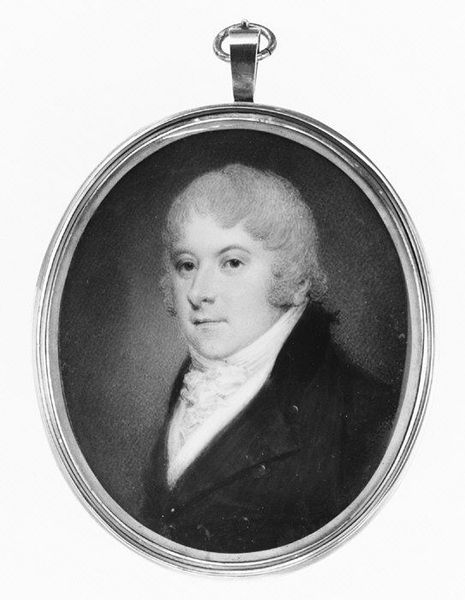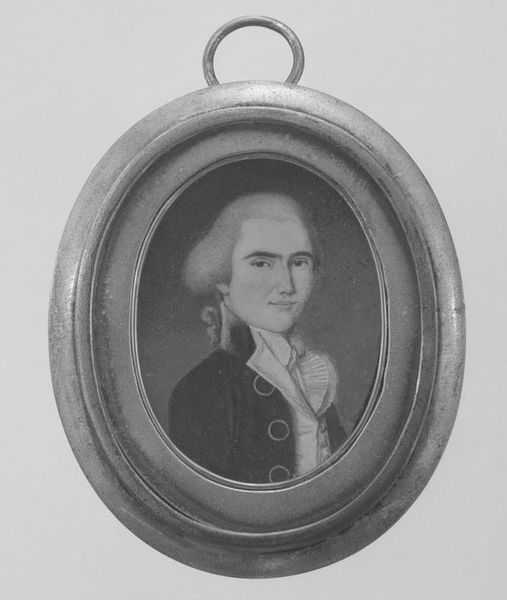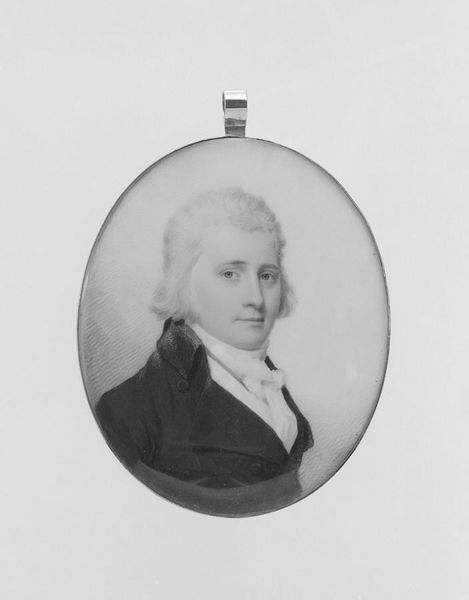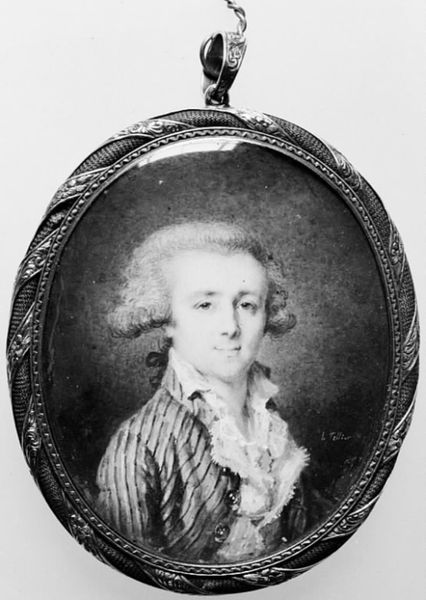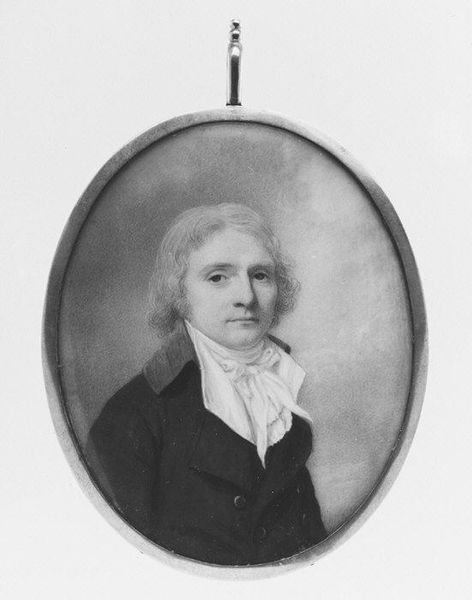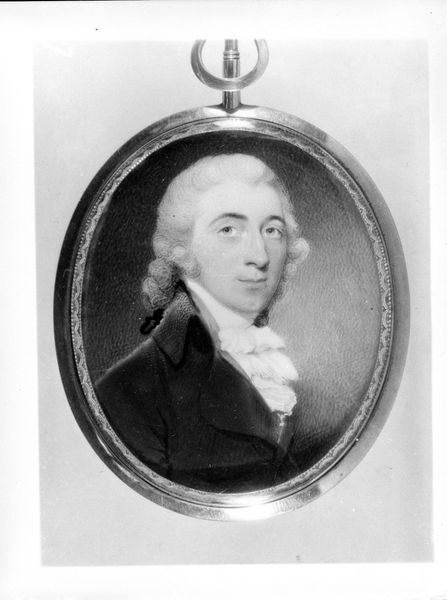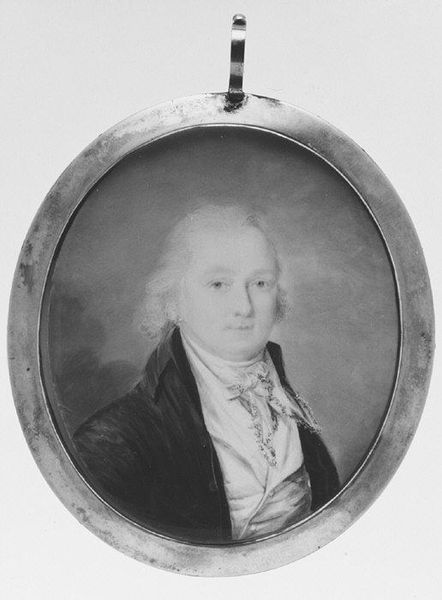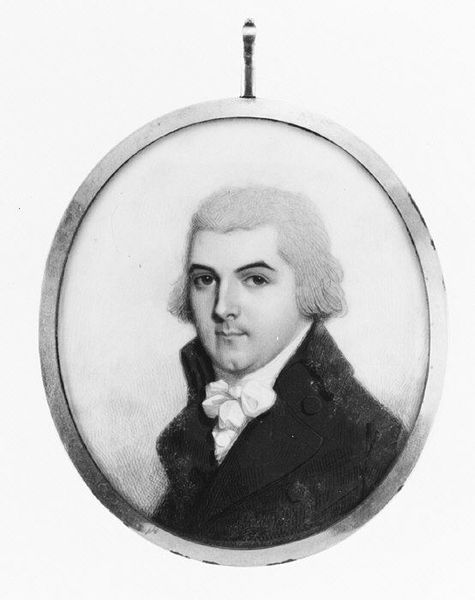
painting, oil-paint
#
portrait
#
neoclacissism
#
painting
#
oil-paint
#
academic-art
#
realism
Dimensions: 2 5/8 x 2 1/4 in. (6.8 x 5.6 cm)
Copyright: Public Domain
Editor: Here we have James Peale's miniature oil painting, "Curtis Clay," from 1798. I'm struck by how intimate it feels, despite the subject's somewhat formal pose. What do you see when you look at it? Curator: Immediately, I'm drawn to considering what it meant to commission, or own, such an object at the end of the 18th century. This was a period of great social upheaval and political transformation in both the American and French Revolutions. Who was Curtis Clay and how did he wish to be represented? The neo-classical style suggests an aspiration to Enlightenment values - reason, order, and virtue. Yet we also see in it hints of individual personality in his expression. Do you think this tension between the public and the private reveals a distinctly American identity being forged at the time? Editor: That's a great point. The portrait does seem to be caught between the individual and the ideal. I hadn’t really considered the historical context. It makes me wonder how ideas around gender or social standing are also being negotiated here through things like clothing and hairstyle. Curator: Precisely. The clothing, the hairstyle... even the size of the portrait is important. This wasn't meant for public display in a grand hall but would be displayed or kept as a token with a more intimate connection to the sitter. This piece seems less about projecting power and more about preserving memory, creating familial or romantic connections and perhaps suggesting a different type of relationship between sitter and viewer compared to its more imposing, academic relatives. Who has access to this "intimate" relationship is key, don’t you agree? Editor: Definitely. It gives a completely new perspective to consider who these portraits were really *for*, not just who they were *of*. Curator: And by extension, how portraiture can become part of our larger discussion about historical constructions of race, gender, and class. These miniatures can serve as powerful reminders of how these hierarchies become visibly ingrained. Editor: It is more complicated than it seems! This close look made me think about portraits, in general, as more than just pretty images of the past. Thank you for that. Curator: Indeed, a small object opens to larger perspectives.
Comments
No comments
Be the first to comment and join the conversation on the ultimate creative platform.
